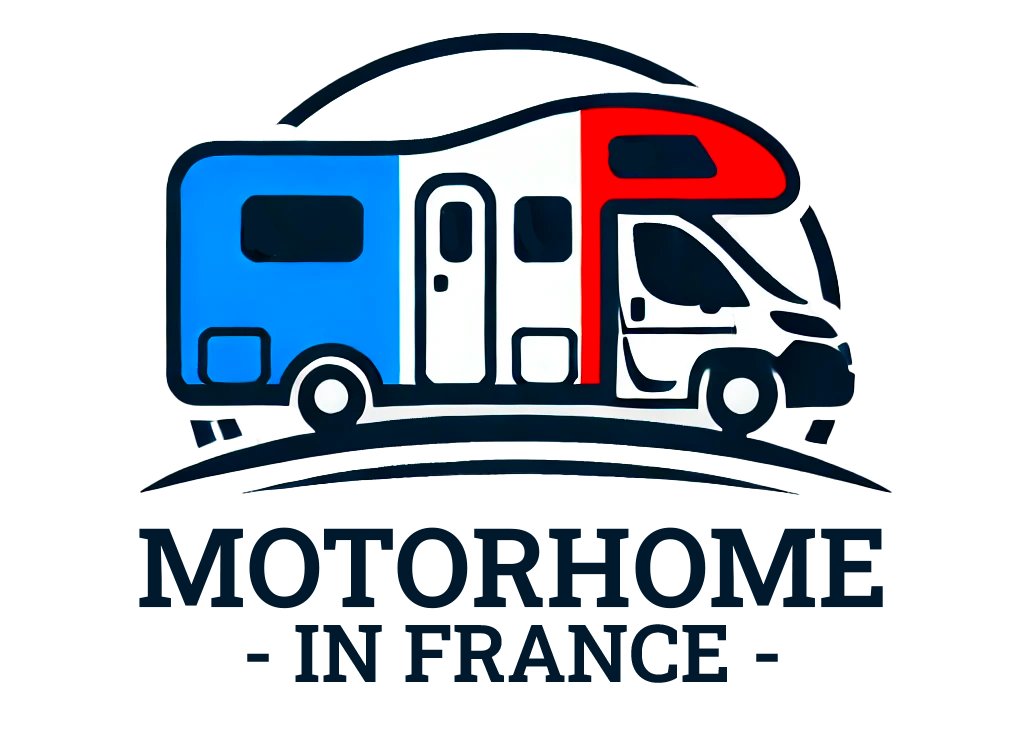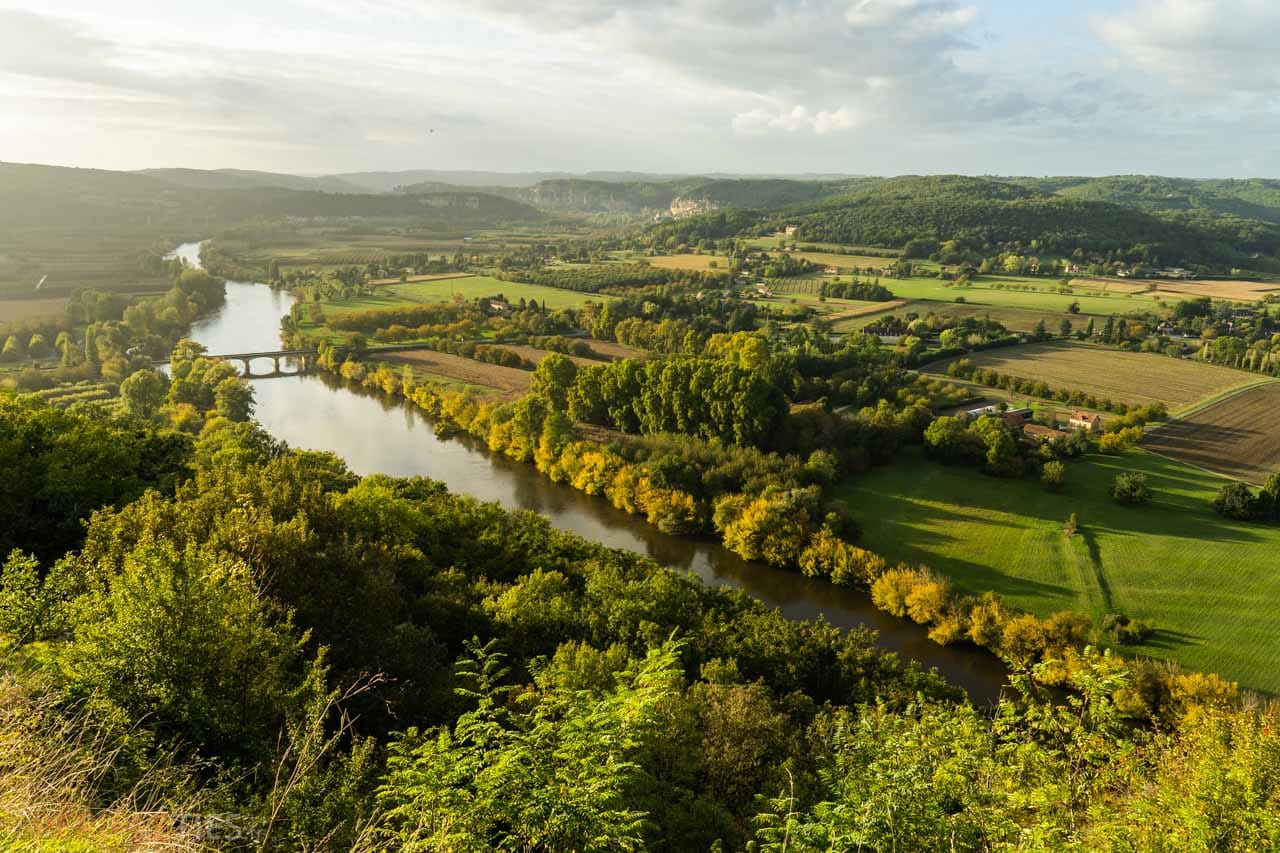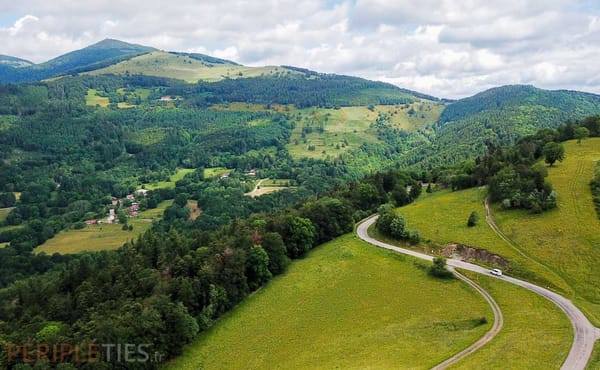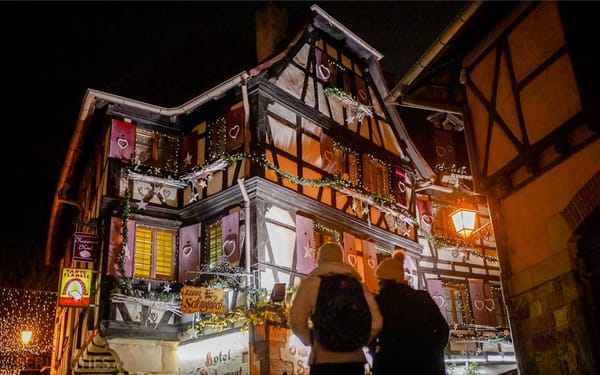Dordogne is a mecca for local produce and gastronomy, and has much to offer epicureans.
Add to that its medieval castles and numerous prehistoric caves, and the Périgord is a tourist destination par excellence.
But the region also offers the chance to get lost on roads off the beaten track, much to the delight of motorhome travellers!
Day 1: The Sarladais and Périgord Noir regions
Whether you're driving your own leisure vehicle or hiring a motorhome in Dordogne, like us, take the road to Sarlat, where you'll be accompanied by walnut trees that form veritable hedges of honour .
At the dawn of autumn, the ochre-coloured stone meets the yellowing leaves and contrasts with a relief that is still green.
Sarlat, the medieval city
Our first stop is Sarlat-la-Canédas, whose name evokes the humid Dordogne-Périgord valley.
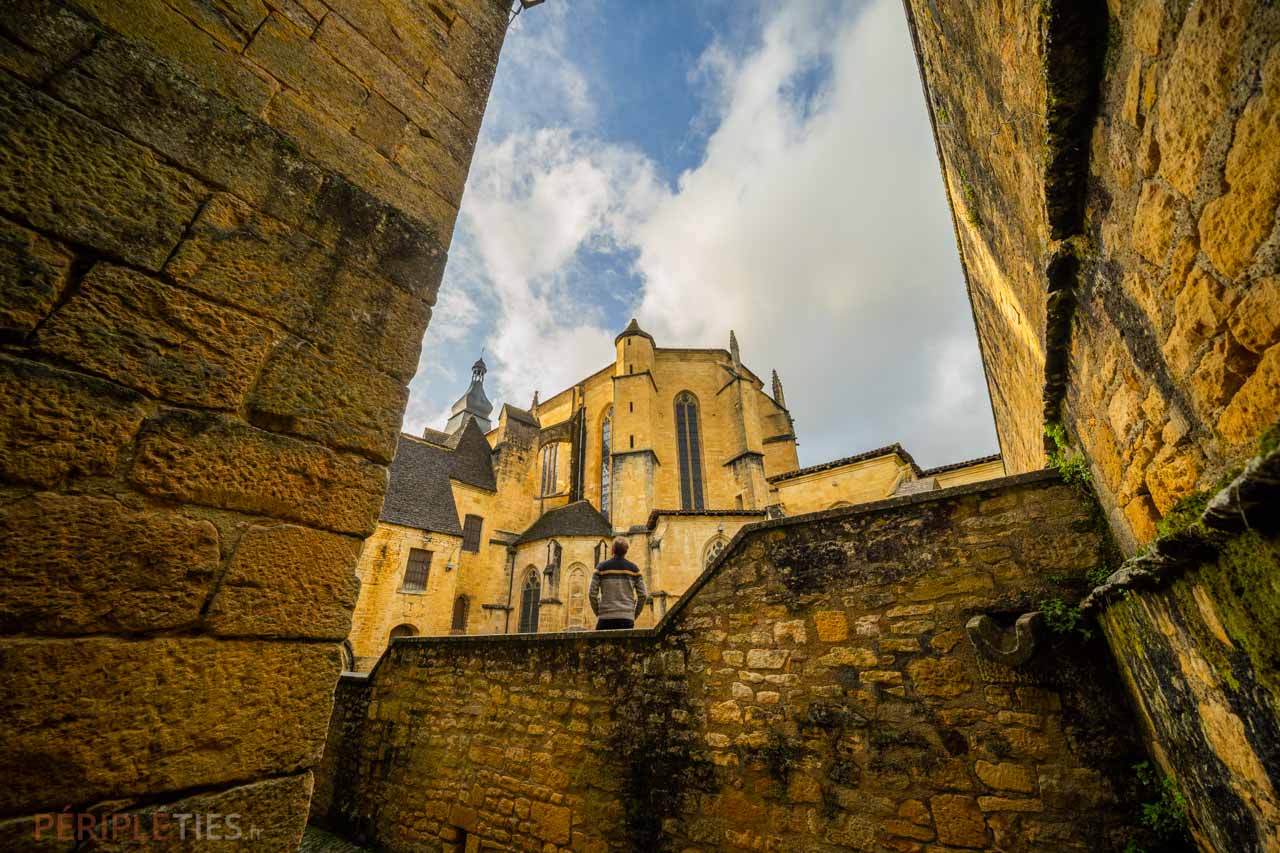
We are lucky enough to discover it in autumn, when the flow of tourists has left the area.
In summer, locals tell us that the town is packed and that it's hard to find a parking space.
It has to be said that, with its tangled alleyways, courtyards and private mansions, this city is absolutely breathtaking.
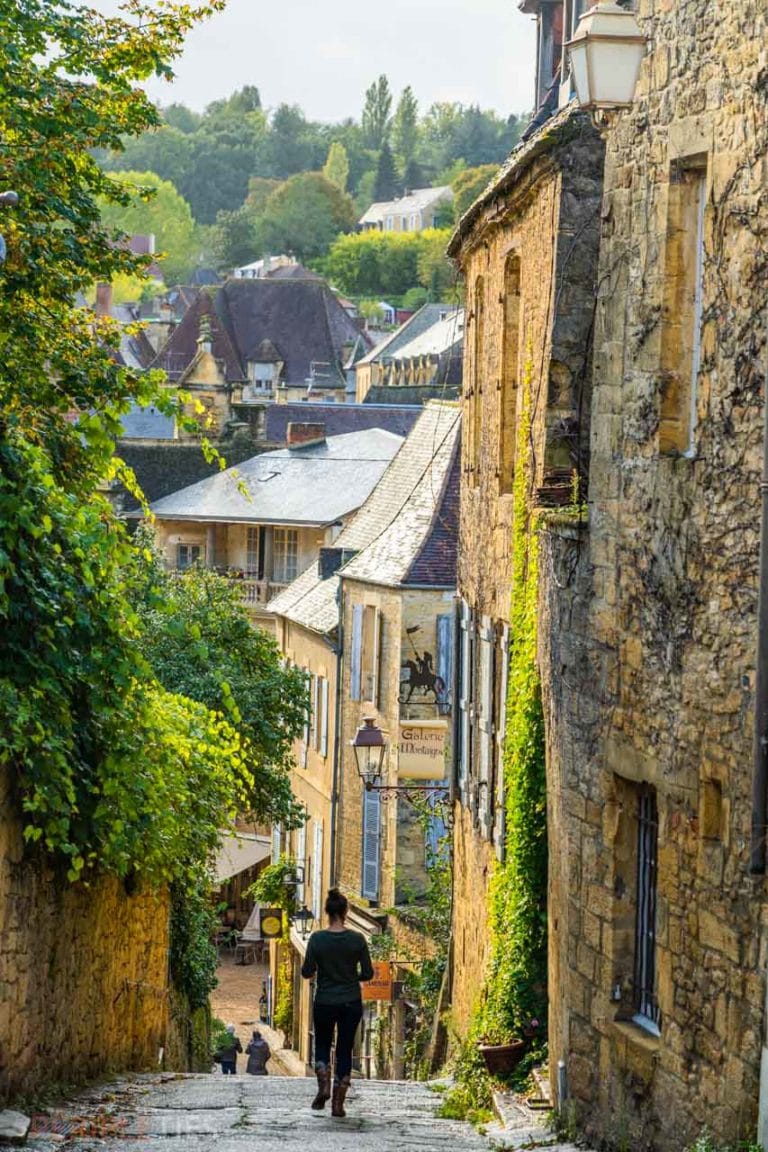
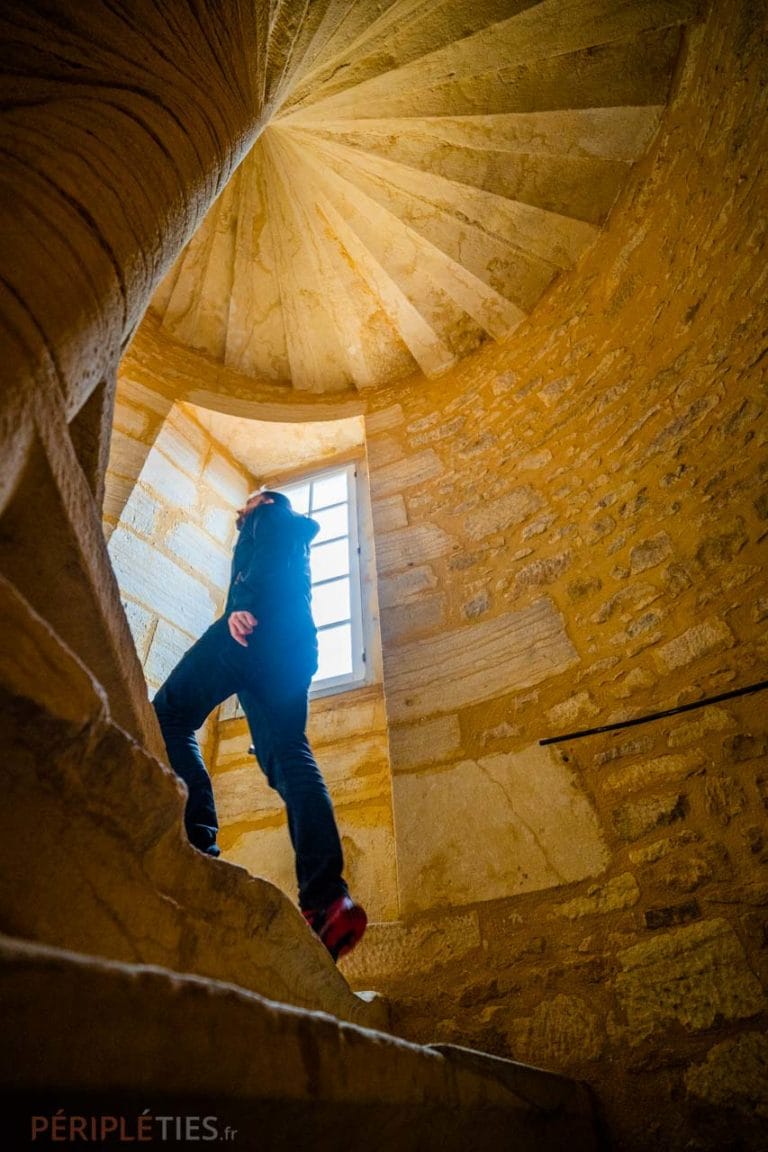
André Malraux, Jean Nouvel
Sarlat is so well preserved thanks to the Malraux law, which aims to conserve the historic hearts of France's heritage cities.
"A real film set", as Simon would say, to which architect Jean Nouvel has added his touch, shaping the large steel doors of Sainte-Marie church.
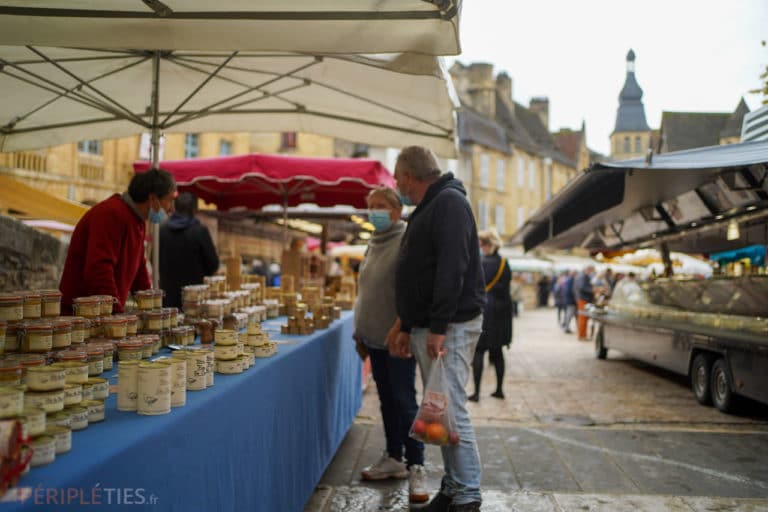
The markets of Périgord
The Sarlat market (Wednesdays and Saturdays) is the most famous in Périgord, but prices are high. It's worth the experience, but there are of course other smaller markets.
- Monday: Ste Alvère.
- Tuesday: Beaumont-du-Périgord, Brantôme.
- Wednesday: Belvès, Bergerac, Périgueux, PIégut-Pluviers.
- Thursday: Domme, Excideuil, St Astier, Terrasson, Lalinde.
- Friday: Brantôme, Ribérac and Vergt.
- Saturday: Belvès, Bergerac, Mussidan, Périgueux, Thiviers and Villefranche-en-Périgord.
- Sunday: Issegeac, St Cyprien.
Duck, foie gras, truffles: Périgord cuisine
It's impossible to miss the gastronomic specialities of Périgord.
Walnuts, foie gras, duck, truffles, porcini mushrooms... And we're in the middle of mushroom season.
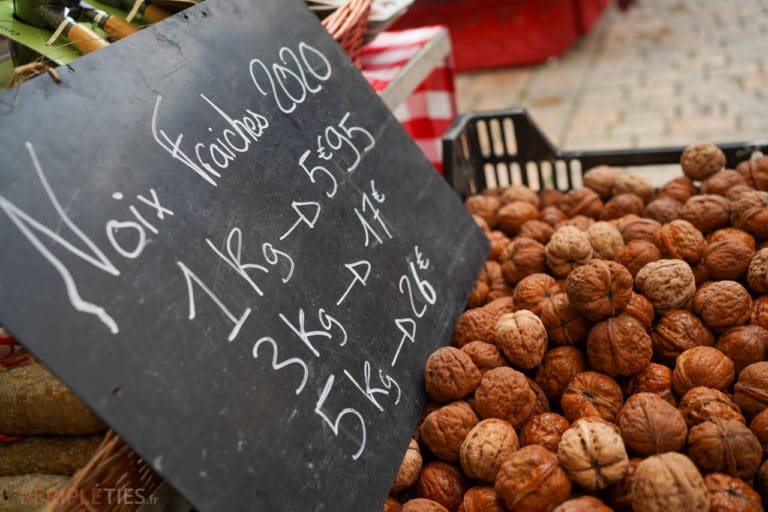
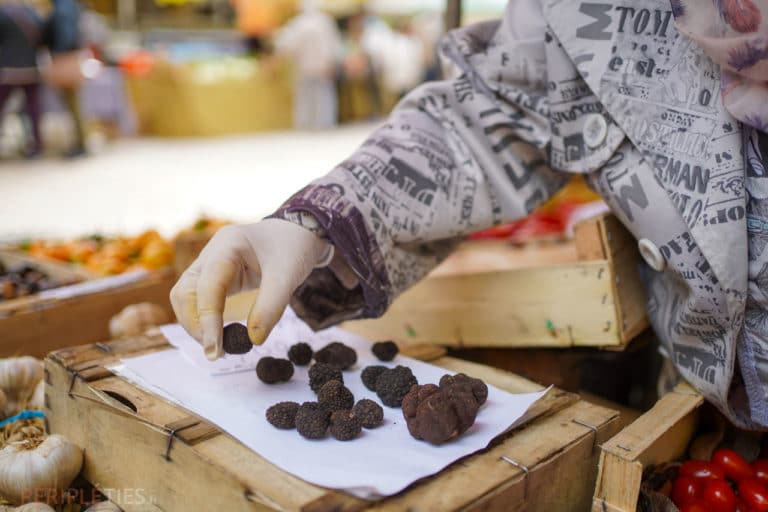
Local producers and short circuits
Strikingly, at a time when the merits of direct sales and short circuits are being sold, the region doesn't seem to have waited for this trend.
There are numerous producer groups and direct farm sales. So it's easy to find something to eat along the way!
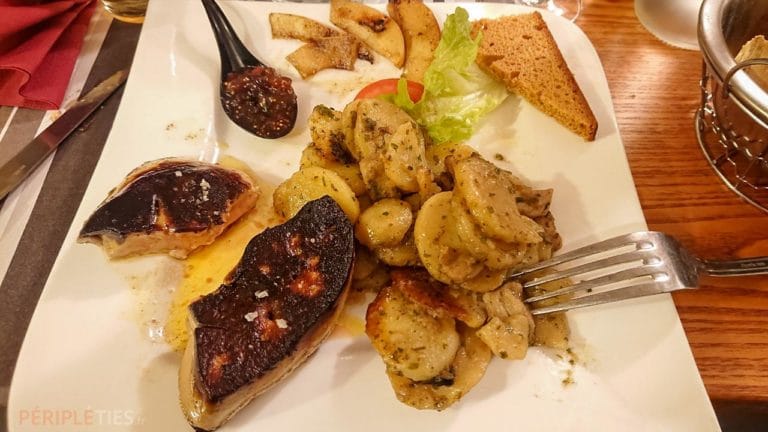
Where to eat in Dordogne? Our selection of inns and restaurants (tried and tested!) 👨🍳
- Brasserie Chez Osar, Le Bugue: A simple, friendly and very inexpensive place to eat. If you've had enough of eating duck... and you're passing through the corner, this is the brasserie whose terrace overlooks the Vézère. The owner and his apprentices are extremely friendly!
- L'Auberge du Peyrol, chez Jeannine, Sergeac. If you want to eat good, traditional food. Farm produce, authentic family cooking, all in a genuine Périgord farmhouse.
- Le relais Périgourdin, Périgueux. Périgourdine specialities cooked to perfection, it's good, hearty and the setting, in a cellar, is very appreciable.
- Le Bistrot d'en face, Bergerac. Simply excellent. Products and dishes from the Périgord region are revisited in a gastronomic way. This bistro has been awarded the Bib Gourmand by the Michelin Guide and is the best address of this stay.
Find the best restaurants in France and Dordogne in the Michelin Red Guide.
Day 2: Montignac and the Lascaux caves
We decide to head to Montignac to visit the famous Lascaux caves.
The original caves - known as Lascaux 1- have been closed to visitors since 1963 in order to preserve them.
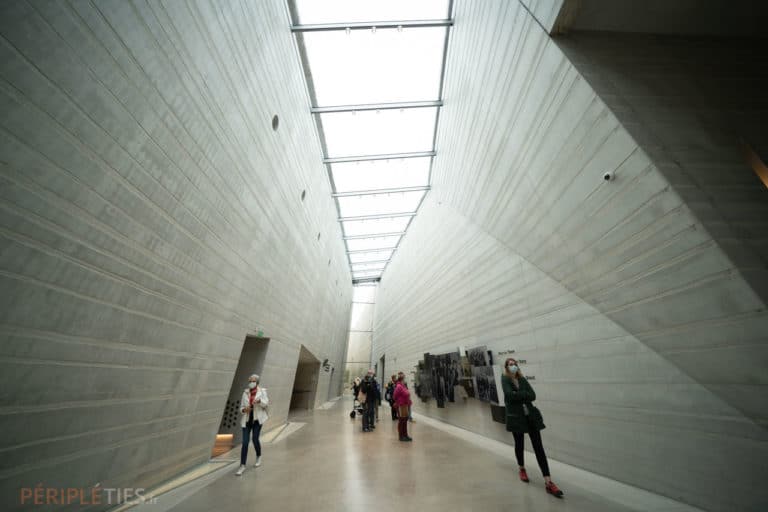
The "Sistine Chapel of prehistory
So there's Lascaux II, the first partial reconstruction of the original cave, and Lascaux IV: the International Centre of Cave Art.
If you're wondering, Lascaux 3 is a travelling reconstruction that travels the world.
Opened in 2016, Lascaux 4 is an exact and complete reconstruction of the original cave and paintings.
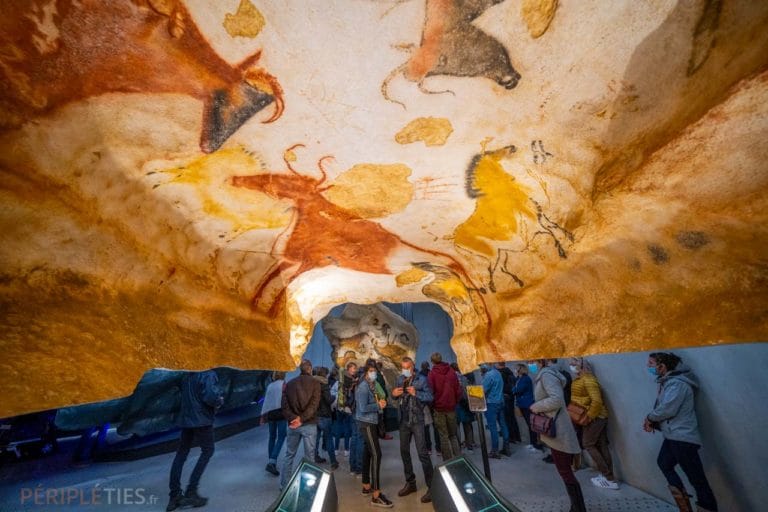
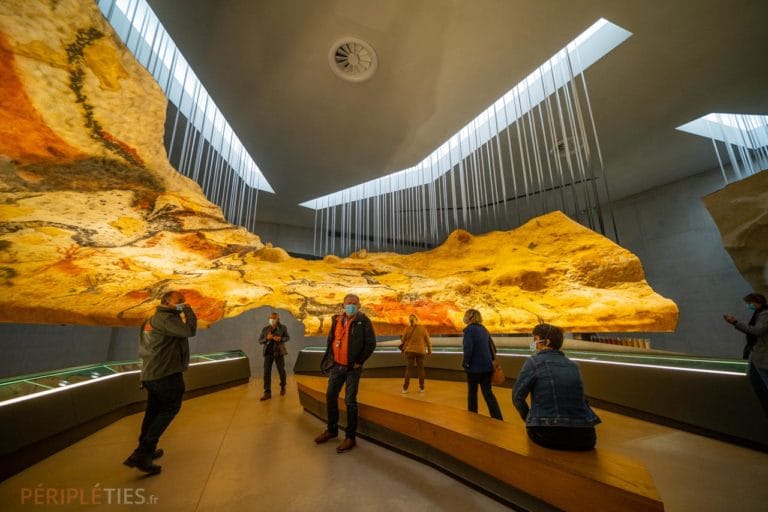
Lascaux IV: International Centre for Cave Art
The site presents the cave as if you were there. The only thing missing is the coolness of the cave for total immersion.
But the visit is interactive and educational. It gives everyone the opportunity to visit, including people with reduced mobility.
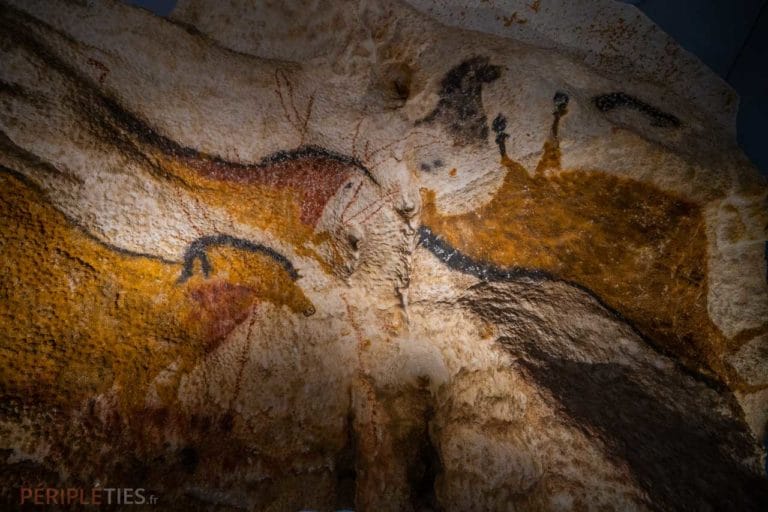
It offers a few keys to understanding what motivated this veritable fresco in the cave that has been dubbed the "Sistine Chapel of prehistory".
Day 3: The Dordogne Valley
Leaving Sarlat, we take the D703 to see the most epic sites in the Dordogne valley. Head for the Cingle de Monfort, dominated by the Château de Fénélon.
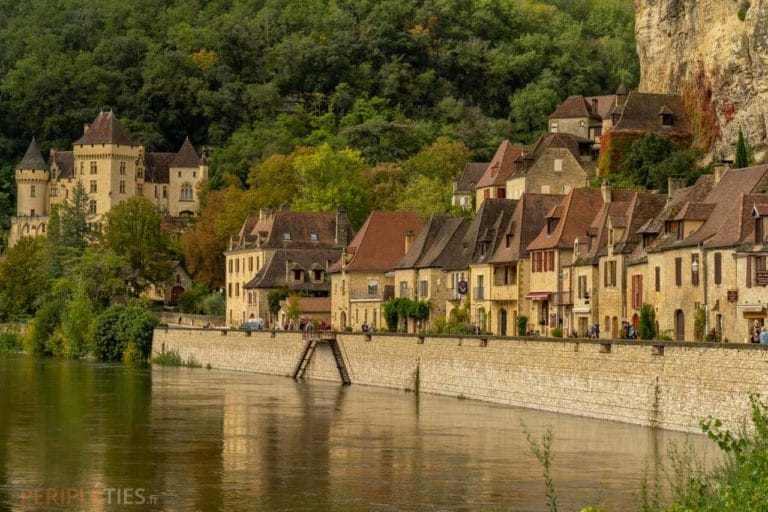
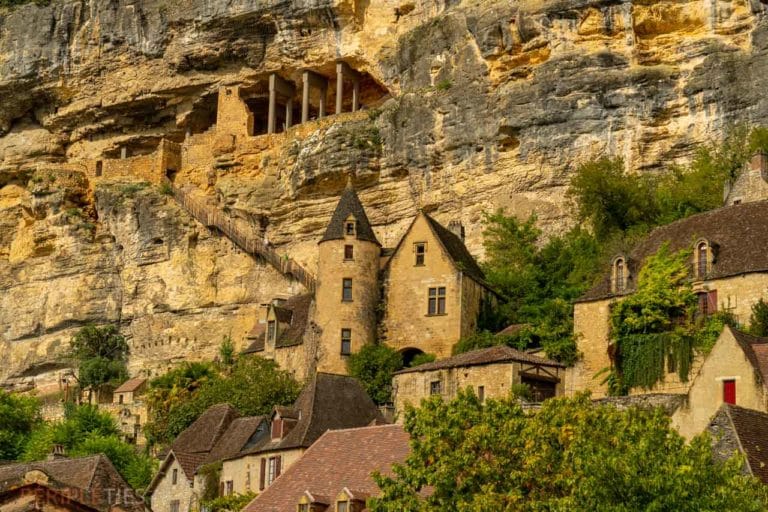
Cingle de Monfort, Roque Gagéac
On the right bank of the Dordogne is Roque Gagéac, with its stone houses suspended as if from the cliff.
The château and gardens of Marqueyssac are nearby, but given the time of year we won't be stopping there.
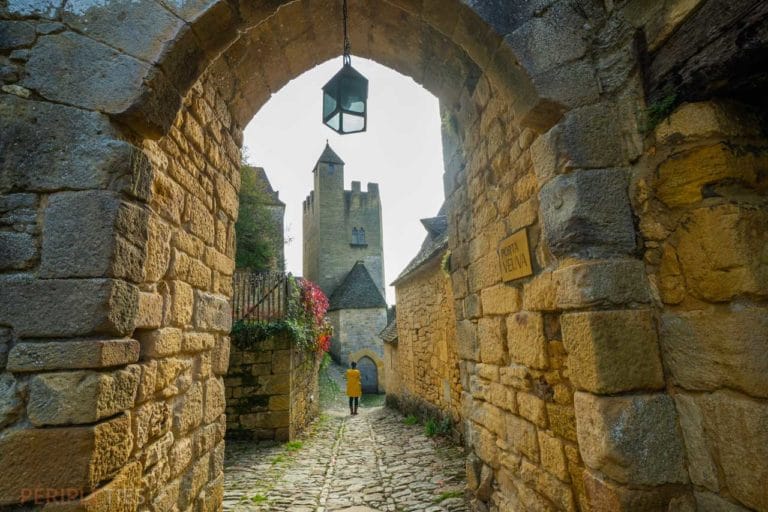
Castelnaud and Beynac castles
We're getting right to the heart of the region's history and the Hundred Years' War. The castles of Castelnaud and Beynac stand on either bank of the Dordogne.
Both offer splendid views over the valley. We decided to linger in Beynac.
We were immediately captivated by the epic character of the town and its ramparts.
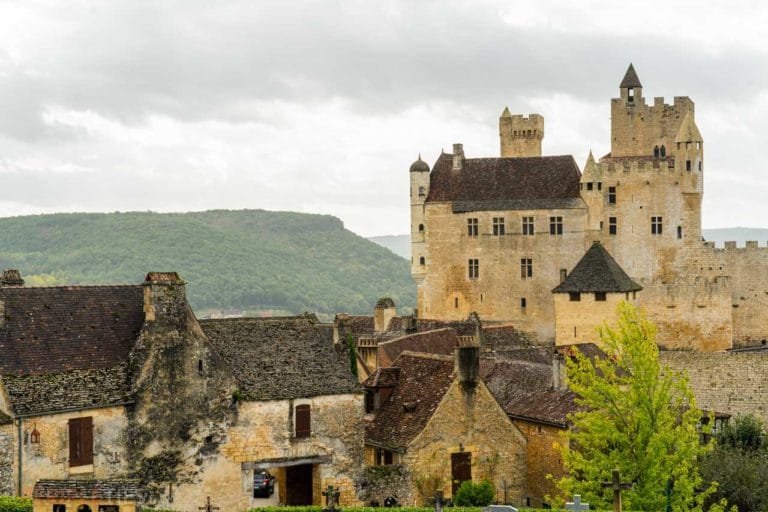
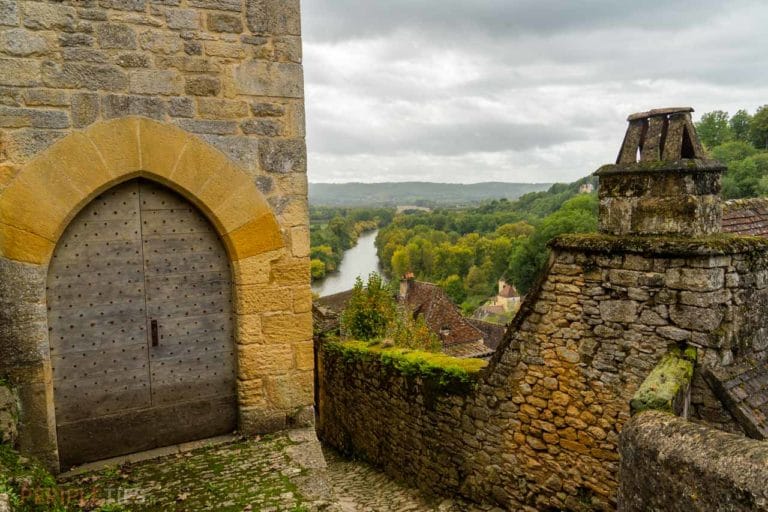
The Bastide of Domme in a motorhome
We continue along the right bank of the Dordogne, crossing it at Allas-les-Mines. On the way to Domme, you can stop off at the Château des Milandes.
On the way to the Bastide de Domme, we take a number of small country roads, forcing us to take an alternative route by motorhome (beware of the 5 km diversions).
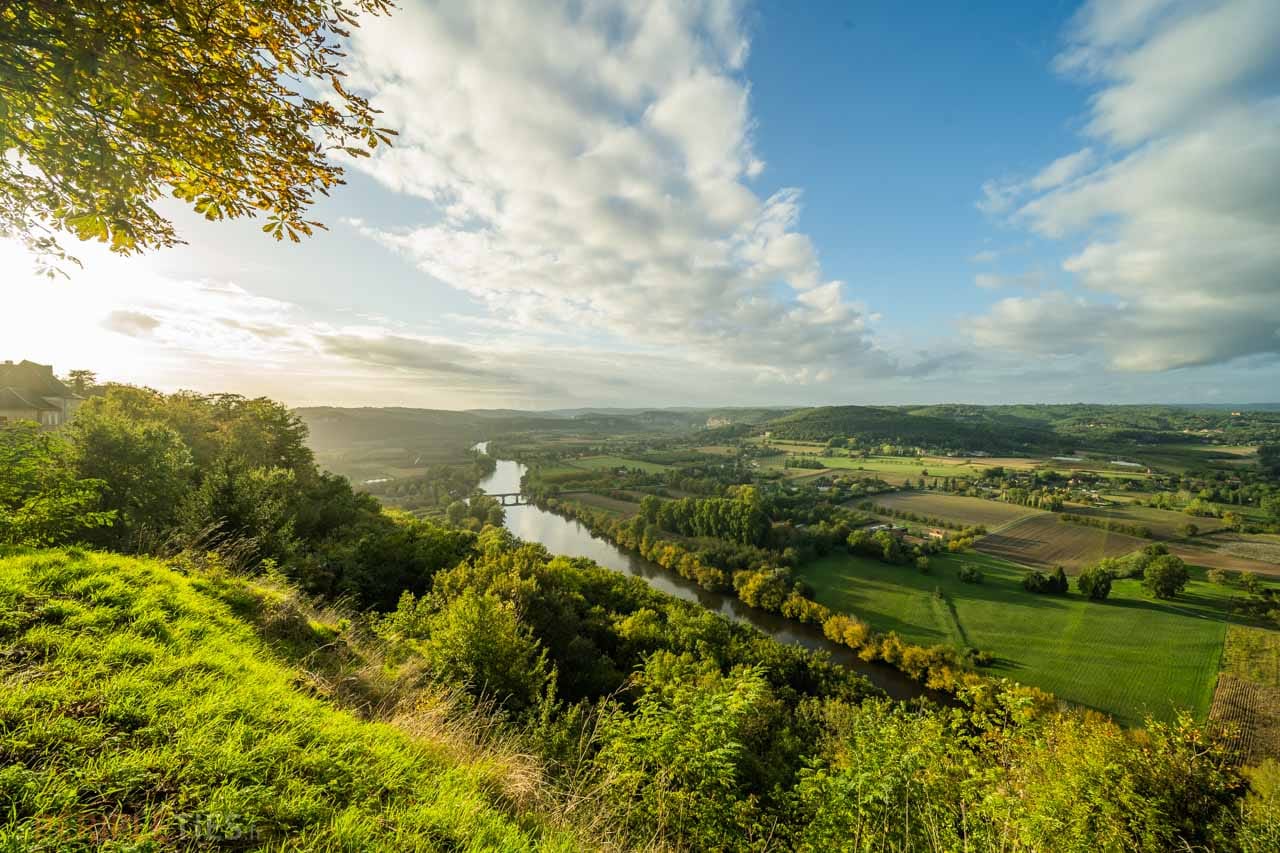
Rewarded for our daring, the city of Philippe le Hardi offers us a sumptuous panorama of the Dordogne valley at sunset.
From the terrace, we have a front row seat!
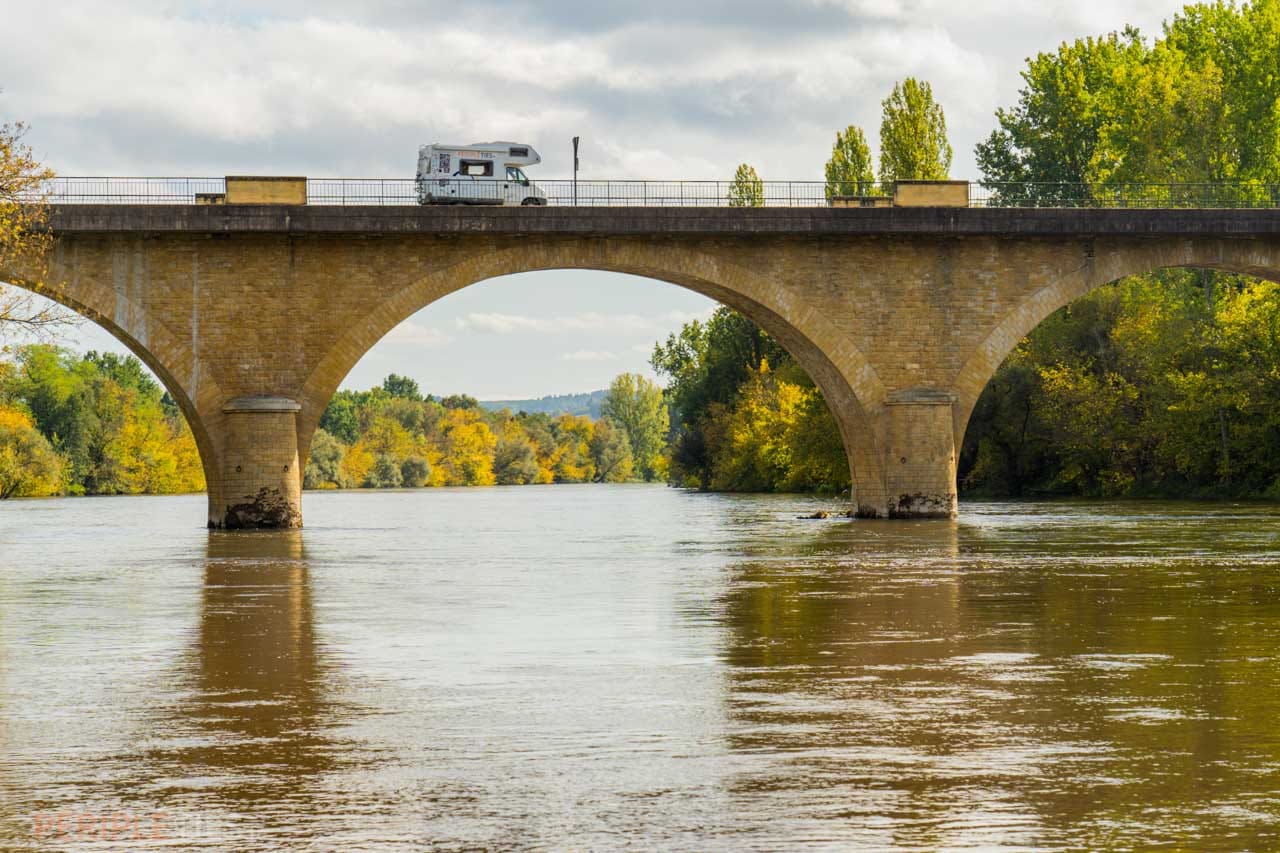
Day 4: Cadouin, Belvès, Montpazier and Limeuil
We spend the night not far from La Roque-Gageac, in the grounds of an inn that is a member of the France Passion motorhome network.
This family cooks typical Périgord dishes. Not the kind you'll get in a restaurant, no, authentic, traditional cuisine!
A stopover in Dordogne with France Passion
Unfortunately, the auberge was closed on the day we arrived.
We'll be content to spend a very pleasant night there. We've added this stopover to our favourites in the France Passion mobile application, and we may come back next time.

Buy the Guide France Passion 2024
The 32nd edition of the 2024 Milestones guide (March 2024 -> Easter 2025) costs 33 euros this year, but with our promotional code, save 2 euros on your first subscription (delivery and postage included).
Cadouin Abbey, Limeuil
There are countless stone villages. Montpazier, one of the most beautiful bastides in Périgord, and Belvès are just some of them.
We enjoy a lunch break in Cadouin, opposite its impressive Abbey.
Then it's back on to the charming village perched at the confluence of the Dordogne and Vézère rivers: Limeuil.
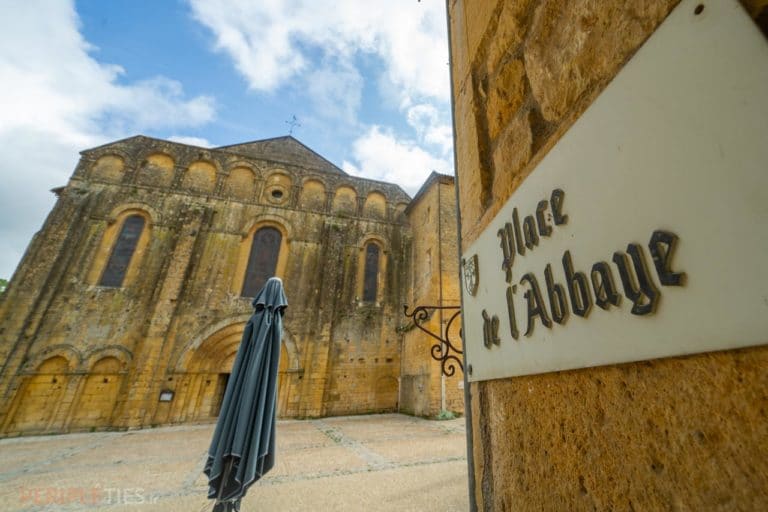
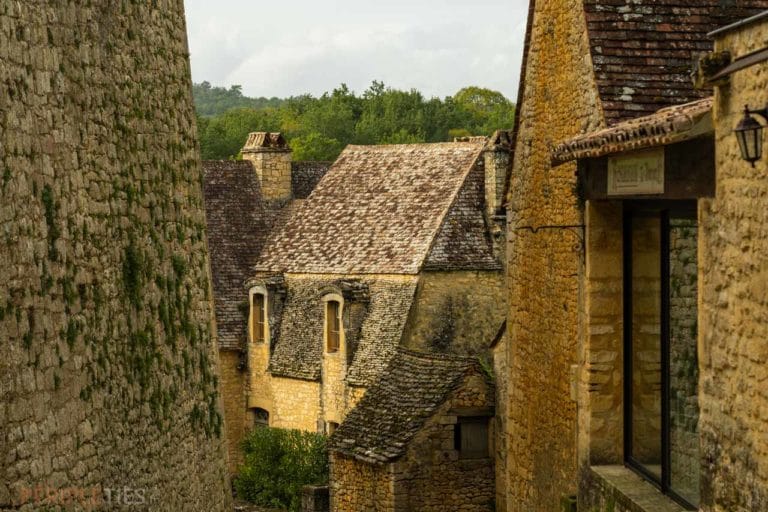
Day 5: The Proumeyssac chasm
After this tour of the Sarladais region, we needed a break!
We stopped off at Le Bournat campsite in Le Bugue. The village also has a large serviced motorhome park.
As the crow flies, we're only 2 km from the Gouffre de Proumeyssac. But there is currently no bridge across the Vézère.
That's why we're walking and taking the forest tracks for a welcome short hike to the site.
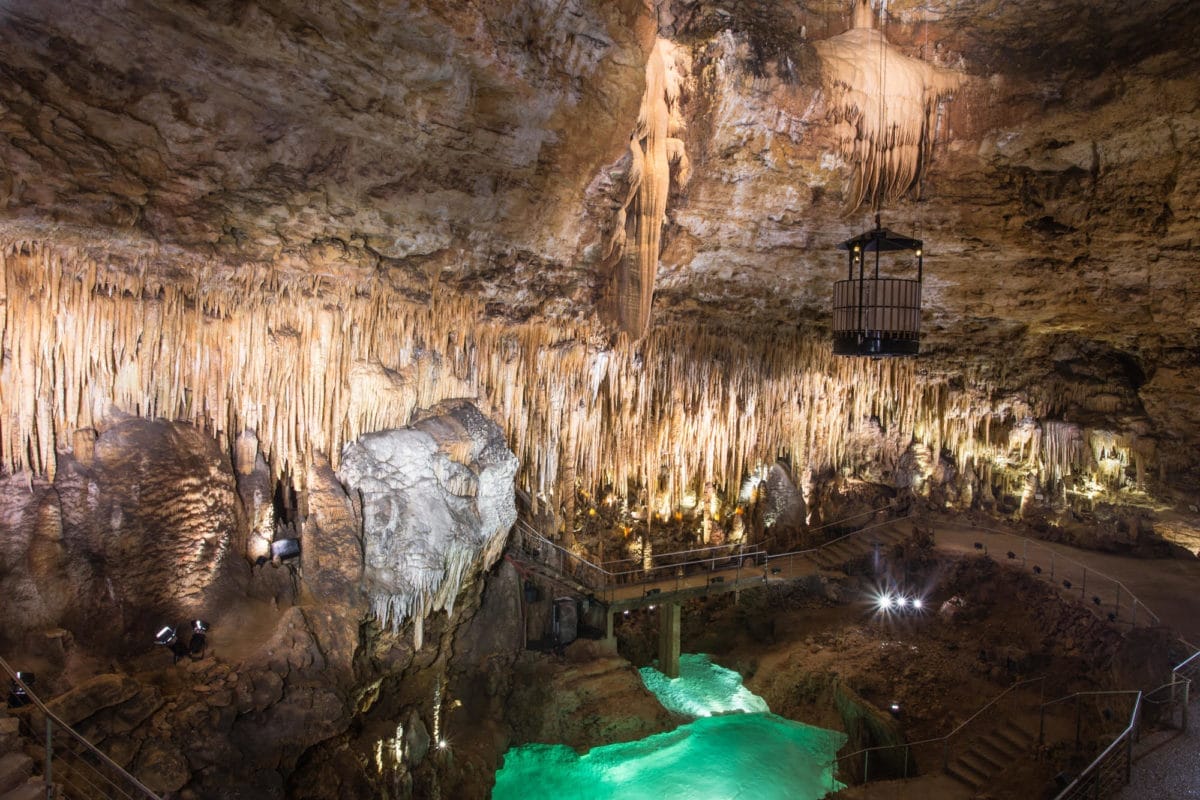
The Poumreyssac chasm was discovered in 1907, but for centuries this abyssal hole fed fantasies of the devil and the underworld in the commune of Audix!
That's what you'll learn on the tour, which combines sound and light with commentary from a guide who accompanies you 52 metres underground amidst an orchestra of stalactites and stalagmites. Thrills guaranteed!
The caves and chasms of Périgord
Geological wonders and intriguing shelters, the caves and chasms are also evidence of the first human settlements in prehistoric times. Dordogne is dotted with hundreds of caves of varying depths.
Among the most striking caves open to visitors are those at Maxange, Rouffignac and Tourtoirac.
Day 6: Heading north for the "green Périgord
So far we've discovered the "picture postcard" Dordogne, but those who know us will know that we like to get off the beaten track.
That's the whole point of motorhoming, you might say!
Hautefort Castle
On our way through the "green Périgord", we make a short stop at the Château de Hautefort.
We're making the most of the rare rays of sunshine that the sky has been kind enough to grant us during our stay!
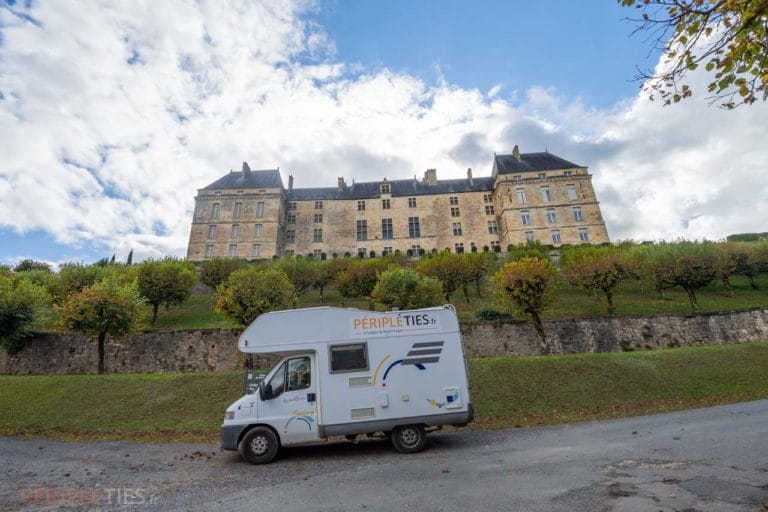
The Auvézère gorges
Then it's on to the Auzevère gorges, which are more private, green and ideal for forest walks.
A number of footpaths have been laid out near St Mesmin.
They provide an opportunity to discover the region's heritage and industrial past, such as the Savignac-Lédrier ironworks.
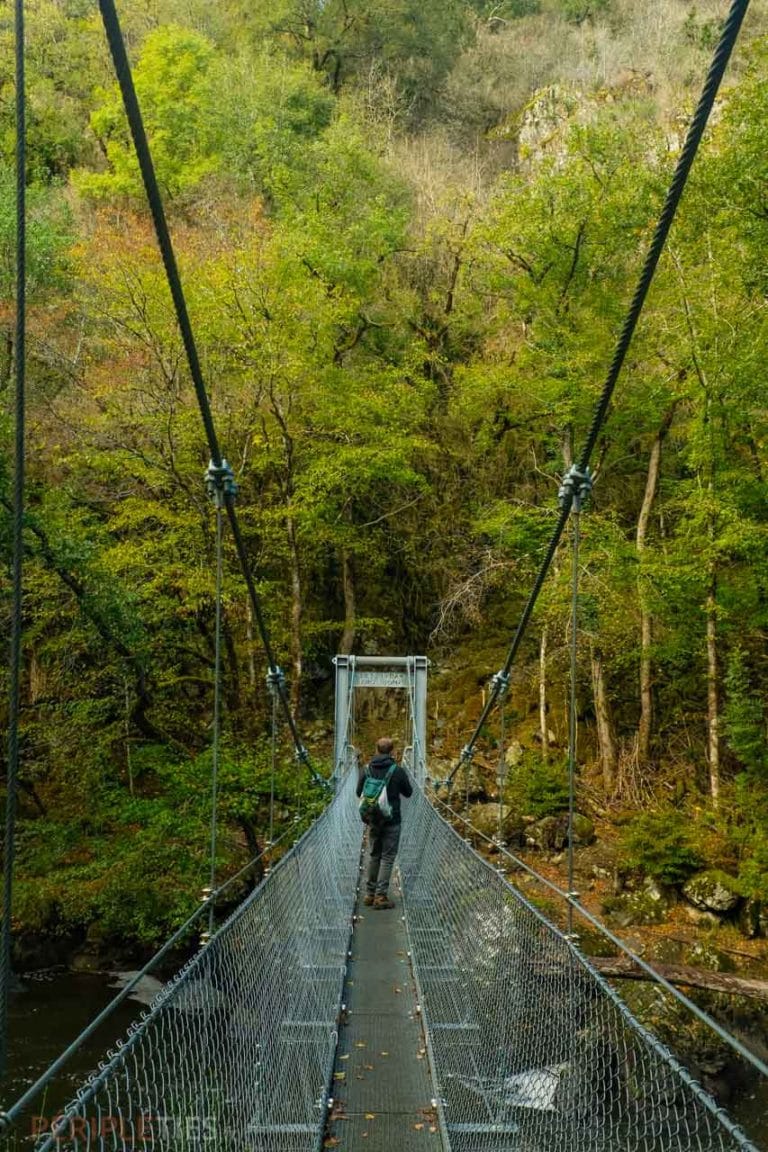

Périgord-Limousin Regional Nature Park
This is the niche of the region, which has opted for green tourism.
Walking, fishing, a bucolic retreat, there are fewer tourist sites to discover than in the Dordogne valley.
But this part of the region has everything to appeal to lovers of tranquillity and nature.
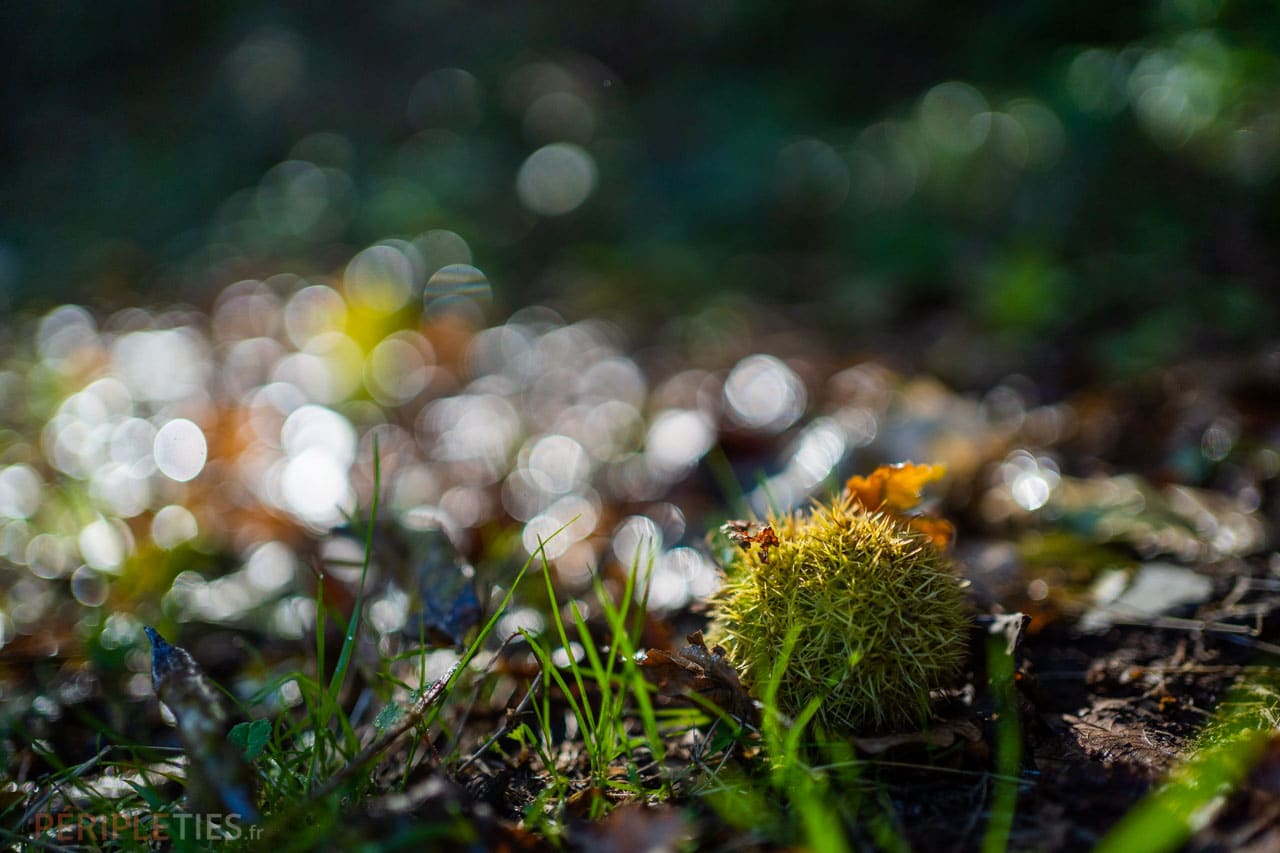
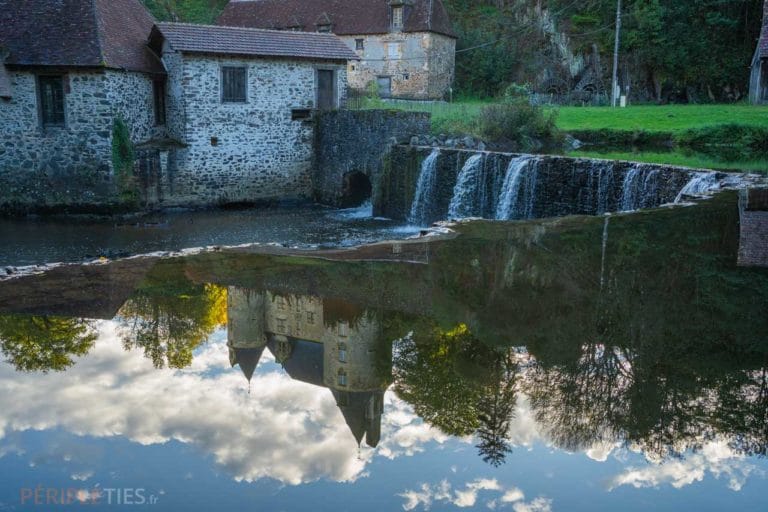
The château at Jumhilac-le-Grand
We love the peaceful, authentic feel of the place. Further north, we decided to push on into the Périgord-Limousin Regional Nature Park.
We reached Jumhilac, where the silhouette of the château stands out in the heart of the town.
This is also where we found the most bucolic service area of our trip!
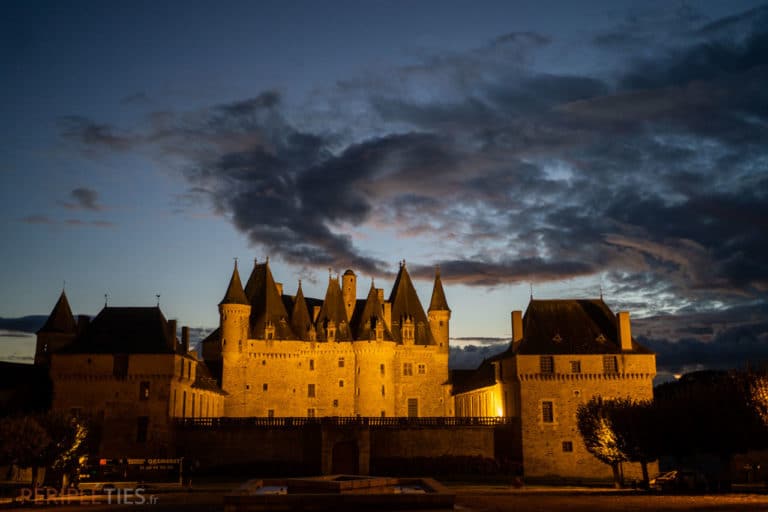
Day 7: Brantôme, the Venice of Périgord
A day on the road, criss-crossing the green hills of the Périgord Vert. We pass through Exciteuil, Saint-Estèphe and Notron.
On our way are the Villard caves and the Renaissance château of Puyguilhem.
We reach Brantôme in the late afternoon, one of the most beautiful stops in Périgord.
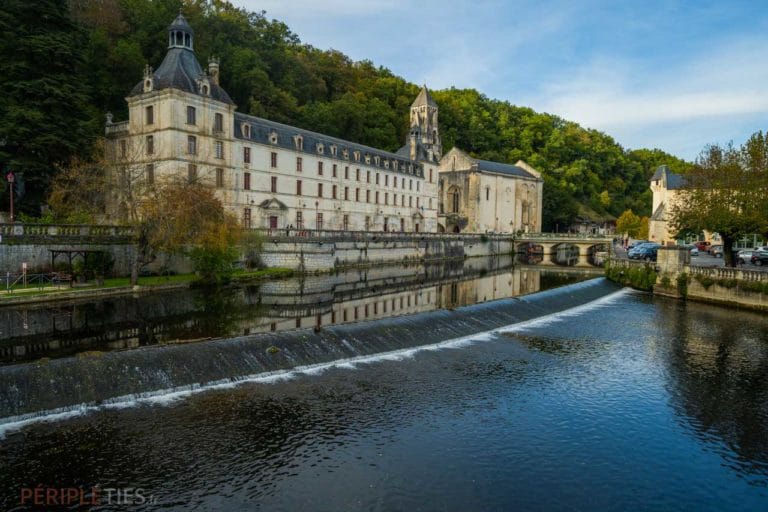
So many influences in the little Venice of Périgord!
First of all, there's the irresistible setting along the Dronne canal and the stone, where troglodyte dwellings blend in with the remarkable buildings.
Saint-Pierre de Brantôme Abbey
The most eloquent is undoubtedly the Benedictine abbey (right next to the caves), the jewel in the crown of Périgord's religious heritage.
The town centre and its narrow streets lined with craft shops add to its charm.
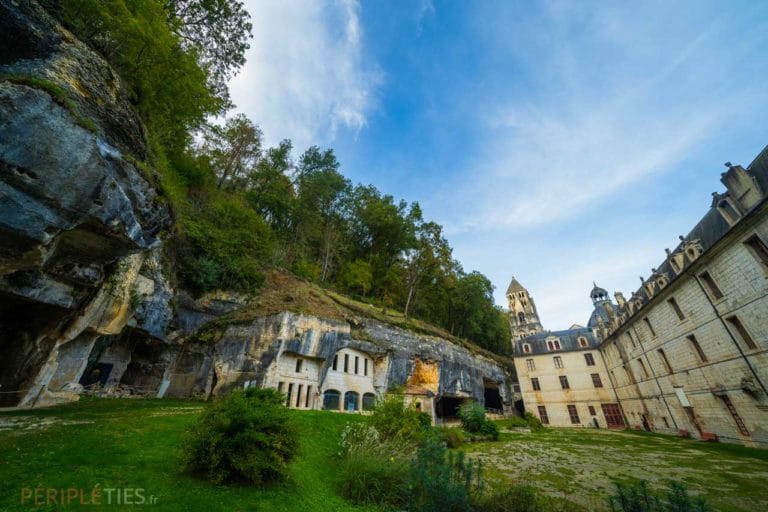
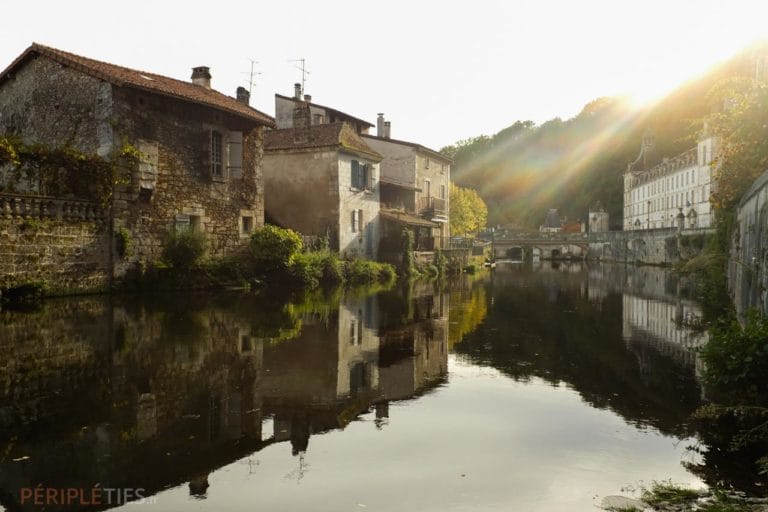
Discovering Périgueux
We end the day in Périgueux, the most densely populated city in Périgord.
Not very appealing at first glance, we literally fell under the spell of its historic centre.
Its Romanesque cathedral, its narrow, tangled streets leading to charming little squares...
We have no regrets about choosing to stroll around in the evening, after a meal in the old town.
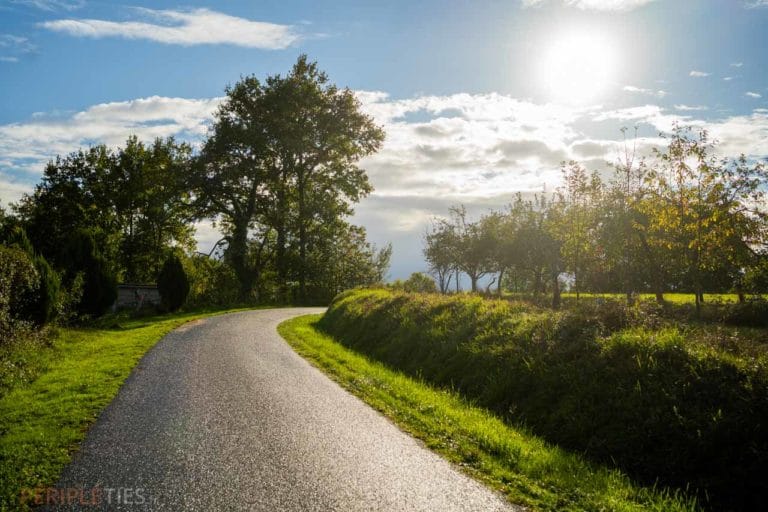
Where to park your motorhome in Dordogne?
- 69 stops at producers, winegrowers and craftsmen via the France Passion network
- 385 parking spaces with private owners via HomeCamper
- 87 communal and private areas listed by Dordogne Périgord Tourisme
Day 8: Discover the Bergerac and Montbazillac vineyards
We can't leave Périgord without admiring the vineyards of Bergerac! Arriving at the Château de Montbazillac, we admired the view perched on a hill.
We decided to look for another France Passion stopover, to sample the traditions and spend a night in the heart of the vineyards.
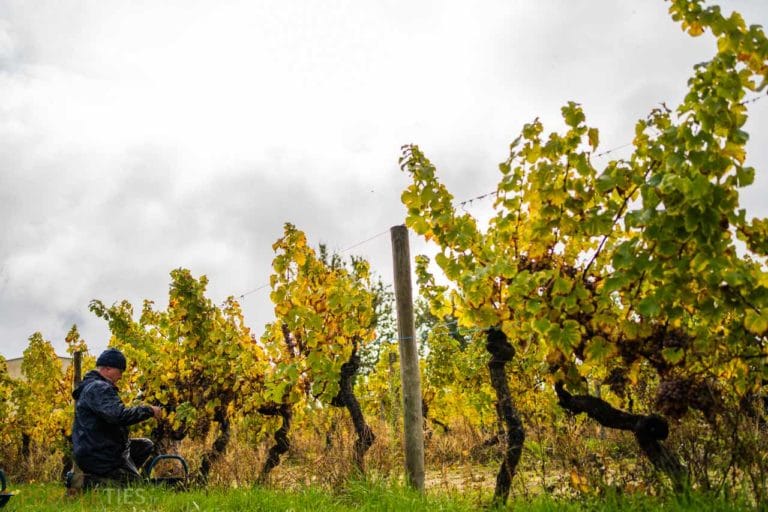
We set our sights on Domaine Maye de Bouyé, owned by the Couture family, who have been producing Bergerac sweet, red and white wines for five generations.
Montbazillac, Bergerac, Pecharmant
Surprise, we're right at the end of the harvest. The hostess nevertheless took the time to offer us a tasting of the estate's grape varieties and wines: Bergerac and the sweet wine of Montbazillac.
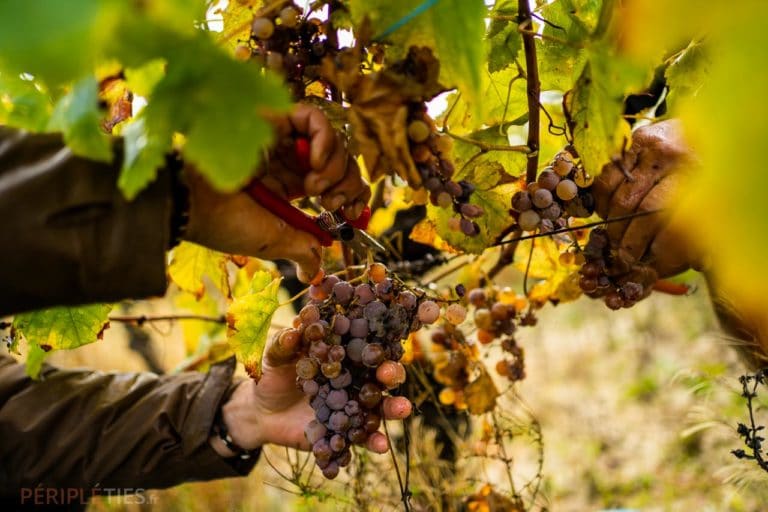
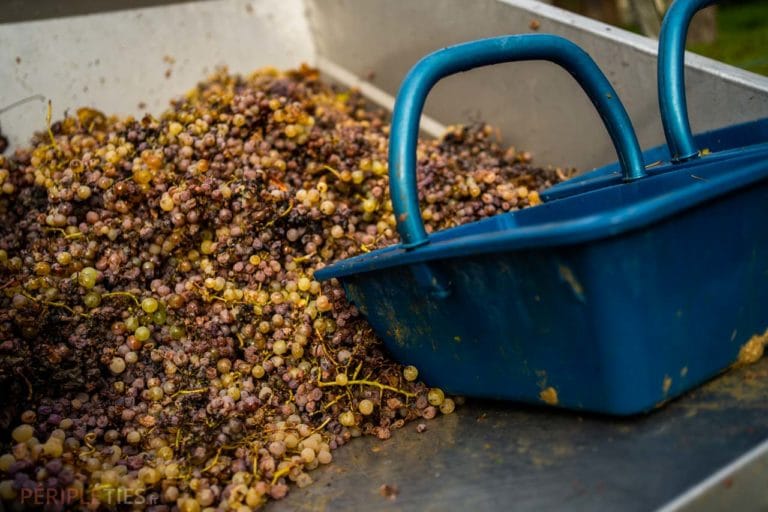
Suffice to say, we didn't leave the Périgord tour empty-handed! After a final stop in Bergerac, we'll head further west towards the Landes and the ocean...
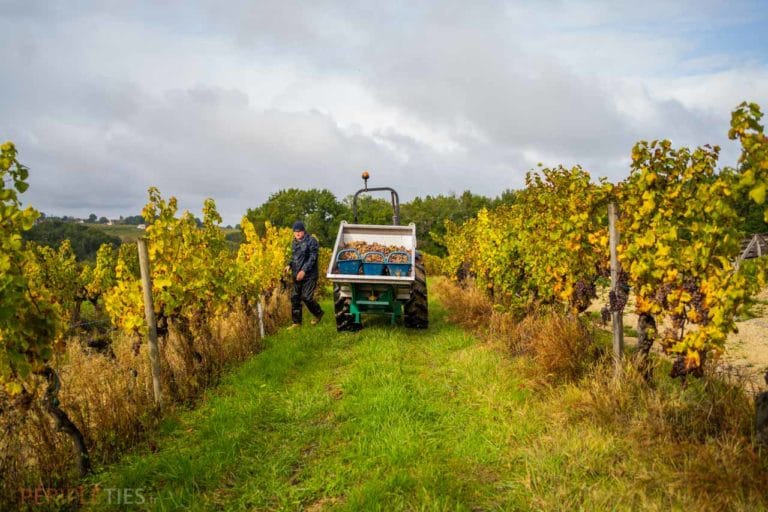
Our itinerary for a week in Dordogne by motorhome
Many of you have asked for our itinerary and map, so here it is! To be adapted according to your entry and exit points in the Dordogne-Périgord 😊
Want to discover more? Check out our most beautiful motorhome itineraries in France.
Pauline & Simon
